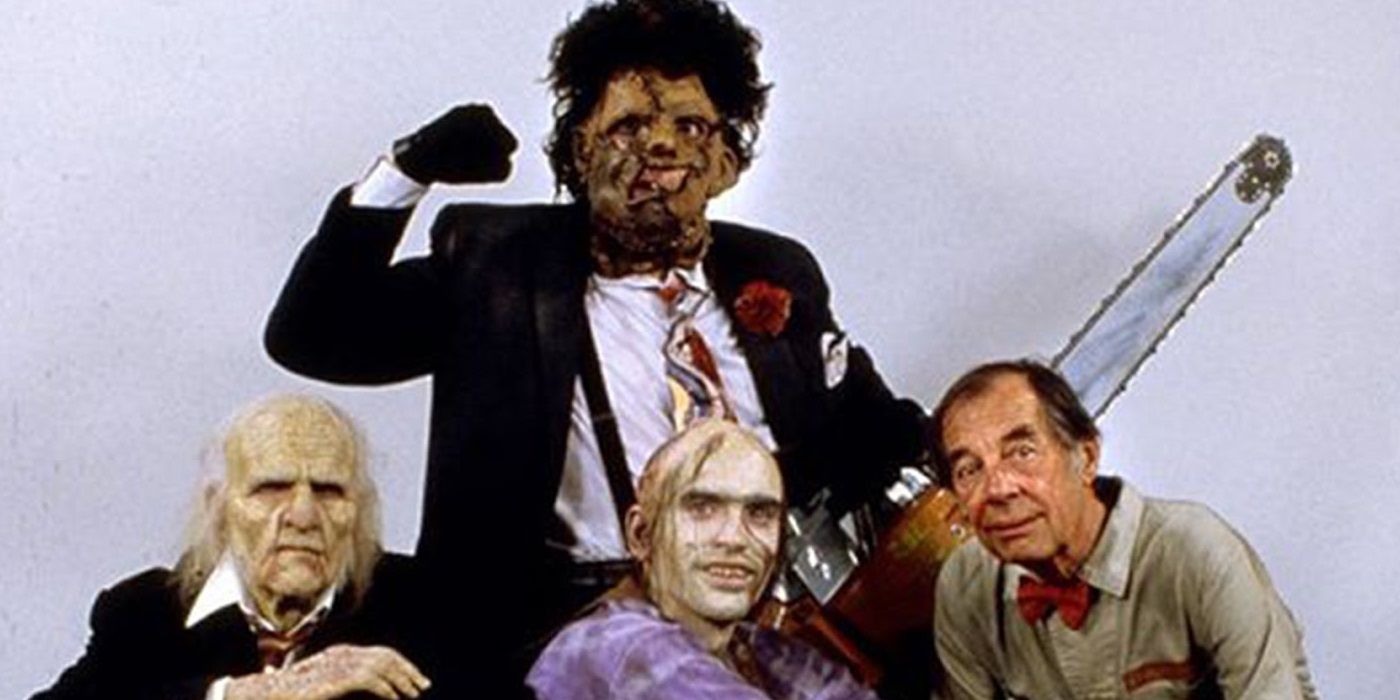
The Texas Chainsaw Massacre was initially released at a time when slasher movies weren't as prominent as they are now. Aside from films like Black Christmas, there wasn't a standard to follow. Because of that, Tobe Hooper's film laid the foundation for future slasher movies, establishing one of the earliest horror icons with Leatherface. It was also one of the first films to play on primal fears like being hunted before it became a standard subgenre trope. But it was another 12 years before the Sawyer family returned for what became the perfect slasher sequel.
The Texas Chainsaw Massacre Part 2 was released when slasher films were far more popular than when the original was released. Instead of having no competition, the franchise had to contend with Freddy Krueger, Jason Voorhees and Michael Myers. But rather than conform to the new standards set by these other series, the sequel decided to avoid a supernatural angle or the quiet stoicism of the Halloween franchise. Instead, the series leaned heavily into horror-comedy, a trend not yet widely explored in the genre.

The film followed the Sawyer family from their rural farmhouse to an abandoned carnival as they continued their bloody rampage. Tonally, The Texas Chainsaw Massacre Part 2 feels entirely separate from the original with its vibrant color palette and focus on the insane Sawyer family, most notably the talkative "Chop Top" Sawyer, who provided most of the comedy. The humor never overshadowed the horror but instead showed just how unstable the Sawyers really were. One example of dark humor masking a horrific fact was at the beginning of the film when the father, Drayton Sawyer, won a chili cook-off with a recipe containing human meat. While horrific, the scene is played for laughs as he dismisses the bone fragments as peppercorns.
The twisted humor in the sequel also served to shift the perspective from the hunted to the hunter. The first film displayed the Sawyers from the victim's point of view. This showed them as nothing more than a family of psychopaths, and while they are, the film lacked the depth that the sequel provided. In Part 2, it was clear the Sawyers were beyond dysfunctional and consistently argued with each other over chores as a normal family would. But rather than doing the dishes, these chores involved murder and torture. The sequel even created an unlikely sympathetic villain in Leatherface.

The original film only showcased Leatherface as the muscle of the family and nothing more. But the sequel deconstructed this idea through the film's final girl, Stretch. Through his attraction toward her, the storyline played on Leatherface's internal struggle between listening to his family or making his own decisions. Even though he is still a murderer, the added layer of depth and desire to protect Stretch showed that not all Sawyers were evil at heart.
The Texas Chainsaw Massacre Part 2 is a slasher sequel that succeeded in separating itself from the tone of its predecessor. Doing so made it stand out as its own film and added more complexity to the villains that were hardly explored in their film debut. Part 2's blend of horror and comedy helped take the genre in a new direction as it continues to stand the test of time as the perfect slasher sequel.
0 Comments